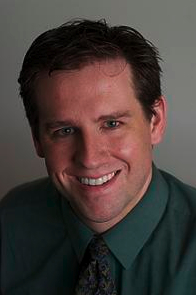Ideally, sleep is a restful time that recharges our bodies and readies us for the coming day.
But, Michael Howell, neurologist at UM, is researching a sleep disorder that is characterized by intense physical motions.
Dr Michael Howell is a neurologist who specializes in sleep disorders and sees patients at Fairview Riverside and Fairview Southdale. He is Program Director of the Clinical Sleep Medicine Fellowship at Hennepin County Medical Center and the University of Minnesota as well as Medical Director of the Fairview Sleep Center-Edina. His clinical interests include sleepwalking and related disorders such as REM Sleep Behavior Disorder, Sleep Related Eating Disorder, sleep seizures and other violent sleep behaviors.
Paradox Lost

While we are sleeping, we have occasional periods of intense brain activity with vivid, often bizarre, dreams. This is REM sleep. Despite the intense mental activity we are motionless due to brain-stem circuits that paralyze our muscles. French researchers in the 1960’s called this, sommeil paradoxal, or paradoxical sleep, since the brain appeared wakeful but the patient was clearly sleeping.
In 1982 my mentor Dr Carlos Schenck, was seeing patients on his first day of clinic at Hennepin County Medical Center. There he met a slight 68 year-old man who was acting out dreams that he was playing North American rules football. Unfortunately he was also jumping out of bed. Later it was revealed that was not paralyzed during REM sleep. His paradox had been lost.
He was not alone.
Thousands of similar patients have been identified who punch walls and bed partners, all while dreaming they are fending off attackers. Others leap and jump. One patient broke his pelvis while doing a cannon ball onto his bedroom floor. It is estimated that this disorder called REM sleep behavior disorder, or RBD, affects 35 million people worldwide.
Over the ensuing years many individuals with RBD develop Parkinson’s disease, a neurological disorder of movement. Long-term follow up studies have demonstrated that nearly 90% of patients develop a parkinsonian disorder.
This sobering statistic is often difficult for patients to comprehend.
It is uncertain what measures may be taken to prevent Parkinson’s however researchers are closing in on medications that may delay its progression. As RBD predicts later disease the condition provides a unique opportunity for the development of neuroprotective therapy. It is the ultimate goal of RBD researchers to end the scurge of Parkinson’s by studying this bizarre condition of sleep-related violence.
Thus a story that began with a lost paradox will end when the cure to Parkinson’s disease is found.
Read More: Yahoo Health: Acting Out Dreams Is Often An Early Sign Of A Deadly Illness

